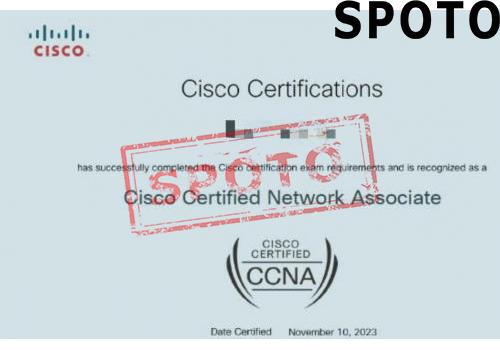
Table of Contents
As network technology continues to advance and business demands grow, the Open Shortest Path First (OSPF) protocol has become increasingly crucial in ensuring network stability, enhancing network efficiency, and supporting complex network architectures. This guide will explore the design principles, configuration methods, and troubleshooting techniques of OSPF to help network engineers and administrators better comprehend and apply this powerful routing protocol.
Overview of Open Shortest Path First (OSPF)
OSPF is a link-state routing protocol that calculates the best path to a destination by constructing a complete network topology map. This detailed introduction will explore how OSPF works, its features and benefits, and how it compares to other routing protocols.
How OSPF Works
- Link State Database (LSDB): The OSPF router first collects information about the status of all links in the network and stores this information in the local Link State database.
- Dijkstra Algorithm: Once complete network information has been collected, OSPF uses Dijkstra's algorithm to calculate the shortest path to each destination.
- Route Update: The OSPF router periodically sends Link State Announcements (LSAs) to exchange network information. When the network changes, the affected routers generate new LSAs and quickly propagate them to other routers to update the routing information for the entire network.
- Area: OSPF can divide a large network into multiple regions to improve efficiency. Routers in each zone only exchange information with other routers in the same zone, reducing the complexity of route calculations.
Features and Benefits of OSPF
- Fast Convergence: OSPF can quickly detect network changes and quickly recalculate routes to achieve fast convergence.
- Multipath Routing: OSPF supports Equal-Cost Multipath (ECMP) and Unequal-Cost Multipath (UCMP), allowing networks to select multiple routing paths based on link cost.
- Scalability: OSPF is designed for use in large networks and is capable of handling a large number of routers and links.
- Multi-Region Support: By dividing the network into multiple zones, OSPF can reduce the complexity of route calculation and the propagation range of route information.
- Security: OSPF supports multiple security mechanisms, such as simple password authentication and more advanced authentication methods, to ensure the security of routing information.
- Flexibility: OSPF supports multiple types of network environments, including point-to-point, broadcast, and NBMA.
Comparison to Other Routing Protocols
OSPF is a link-state protocol, while protocols like EIGRP and RIP are distance-vector protocols. Link-state protocols like OSPF generally offer better scalability, faster convergence, and more efficient use of network resources compared to distance-vector protocols.
By understanding the key aspects of how OSPF works, its features and benefits, and how it compares to other routing protocols, network administrators can make informed decisions on the most appropriate routing solution for their network infrastructure.
OSPF Design Principles
Designing an efficient OSPF network requires a comprehensive consideration of multiple factors to ensure optimal operation and scalability. Here are the key principles to consider when designing an OSPF network:
Network Topology
- The network topology forms the foundation of OSPF design.
- Identify the key nodes and links in the network, and understand how they impact routing and traffic distribution.
- Consider the physical and logical structure of the network, including routers, switches, and link types.
Traffic Requirements
- Analyze the traffic patterns and needs of the network, including the direction, size, and priority of data flows.
- Design OSPF routing strategies based on traffic requirements, such as load balancing, traffic engineering, and Quality of Service (QoS).
Scalability
- Ensure the OSPF design can accommodate the future growth and expansion of the network.
- Leverage OSPF's multi-region feature to manage large-scale networks by dividing the network into logical areas, controlling the propagation and processing of routing information.
Convergence Time
- OSPF's fast convergence is a key advantage, so the design must ensure the network can quickly adapt to link or router failures.
- Optimize OSPF configurations, such as setting the Hello and Dead intervals, to speed up convergence.
Security
- Implement an authentication mechanism to prevent unauthorized access and leakage of routing information.
- Use access control lists (ACLs) and encryption to enhance the security of OSPF packets.
Redundancy
- Design highly redundant networks to ensure continuous operation in the event of a link or device failure.
- Utilize multipath routing and virtual links to provide alternate paths.
Address Planning
- Properly plan IP addresses and OSPF zone configurations to simplify network management and routing design.
- Consider using OSPF's route aggregation feature to reduce the size of the routing table and the frequency of route updates.
Device Compatibility
- Ensure that all network devices support OSPF and are properly configured and operational.
- Consider compatibility issues between different devices and operating systems.
Performance Monitoring
- Implement a network performance monitoring mechanism to track OSPF's performance and network status in real-time.
- Use network management tools to collect and analyze OSPF routing information and performance metrics.
Documentation and Standardization
- Document OSPF configuration and network design to ensure network maintainability and manageability.
- Develop standardized configuration templates and best practices to simplify network deployment and maintenance.
By considering these design principles, you can construct an efficient, stable, and easy-to-manage OSPF network tailored to your specific business needs and network environment, achieving optimal performance and reliability.
OSPF Configuration Basics
Configuring OSPF is a key step in automating network routing. Here are the basic steps and commands for configuring OSPF, as well as an example configuration file.
Enable OSPF Process
On Cisco routers, you first need to enable the OSPF process. This can be done using the global configuration command router ospf followed by a unique process number.
router ospf 1
Configure Router ID
OSPF requires a unique Router ID (RID), which is typically the IP address of a loopback interface. If not configured, you can manually set it with the following command:
router-id 1.1.1.1
Network Statement Configuration
Use the network command to declare which interfaces on the router should participate in OSPF routing. This requires specifying the IP address and subnet mask.
network 192.168.1.0 0.0.0.255 area 0
Configure Passive Interfaces
If certain interfaces should not propagate routing information, they can be set as passive interfaces.
passive-interface default no passive-interface GigabitEthernet0/1
Configure OSPF Cost
You can manually set the OSPF cost of an interface to influence route selection.
ip ospf cost 100
Configure Route Summarization
To reduce the size of the routing table, route summarization can be used on ABRs (Area Border Routers).
area 0 range 192.168.0.0 255.255.0.0
Configure Authentication
To enhance security, authentication can be added to the OSPF configuration.
area 0 authentication
Configure Virtual Links
In multi-area OSPF, virtual links are used to connect non-directly connected areas.
area 0 virtual-link 2.2.2.2
Configuration Example
Below is a simple OSPF configuration example showing how to configure a basic OSPF network.
router# configure terminal router(config)# router ospf 1 router(config-router)# router-id 1.1.1.1 router(config-router)# network 192.168.1.0 0.0.0.255 area 0 router(config-router)# network 10.0.0.0 0.255.255.255 area 1 router(config-router)# passive-interface GigabitEthernet0/1 router(config-router)# end
Verify Configuration
After the configuration is complete, use the following commands to verify the OSPF configuration and status:
show ip ospf show ip ospf interface show ip ospf database
By following these basic steps and commands, you can successfully configure OSPF and implement dynamic routing for your network. Be sure to carefully check each step during the configuration process to ensure the stability and performance of the network.
The Development Trends of the OSPF Protocol
As a mature dynamic routing protocol, OSPF has been widely adopted around the world. With the continuous advancement of network technology, OSPF is constantly evolving to adapt to new network environments and requirements. Let's explore some future trends and potential improvements to the OSPF protocol, as well as how emerging technologies will impact OSPF design and deployment.
IPv6 Support
With the gradual promotion and application of IPv6, OSPFv3, the IPv6 version of OSPF, will be more widely supported and deployed. OSPFv3 is designed for IPv6 and supports new address architectures and features, such as address auto-configuration and larger address spaces.
Software-Defined Networking (SDN) Integration
As an emerging network architecture, the core concept of SDN is to separate the control and data layers of network equipment to enable more flexible network management. OSPF is likely to be more tightly integrated with SDN in the future to support more dynamic and automated route management.
Enhanced Multipath Routing (ECMP) Optimizations
As network scale and complexity increase, OSPF's multipath routing capability will be further optimized. Through more intelligent routing algorithms and policies, OSPF can make more efficient use of network resources and improve network redundancy and load-balancing capabilities.
Security Enhancements
Network security is an important consideration in network design. In the future, OSPF may introduce more security features, such as stronger authentication mechanisms and encryption measures, to protect routing information from unauthorized access and tampering.
Automation and Intelligence
With the development of artificial intelligence and machine learning technologies, OSPF is likely to integrate more advanced automation and intelligence functions. For example, by analyzing network traffic patterns and predicting network changes, OSPF can automatically adjust routing policies to optimize network performance.
Large-scale Network Optimization
For large-scale networks, OSPF needs to be further optimized to handle large amounts of routing information and rapid topology changes. In the future, OSPF may adopt more efficient route aggregation and filtering techniques to reduce the number of route information and improve convergence speed.
Cloud-native Network Integration
The rapid development of cloud computing requires network protocols that can adapt to cloud-native environments. OSPF is likely to further integrate cloud-native technologies to support more flexible deployment of network services and automated network management.
Cross-protocol Integration
As the network environment diversifies, OSPF may need to work better with other types of routing protocols. Future OSPF protocols are likely to support cross-protocol integration to enable interoperability between different network protocols.
By staying attuned to these development trends, network administrators can ensure that their OSPF deployments continue to meet the evolving needs of modern network infrastructures, leveraging the protocol's strengths while adapting to emerging technologies and requirements.
Conclusion
OSPF design is critical to the overall performance and stability of a network. As a network engineer, continuous learning and adaptation to new technologies is an integral part of one's career. As technology continues to advance, we expect the OSPF protocol and network design methodologies to evolve and refine to meet the growing demands of modern network infrastructures.
By recognizing the importance of OSPF design, committing to continuous learning, and anticipating the ongoing evolution of the OSPF protocol, network engineers can ensure their skills remain relevant and their network infrastructures remain resilient, efficient, and adaptable to future technological advancements.










